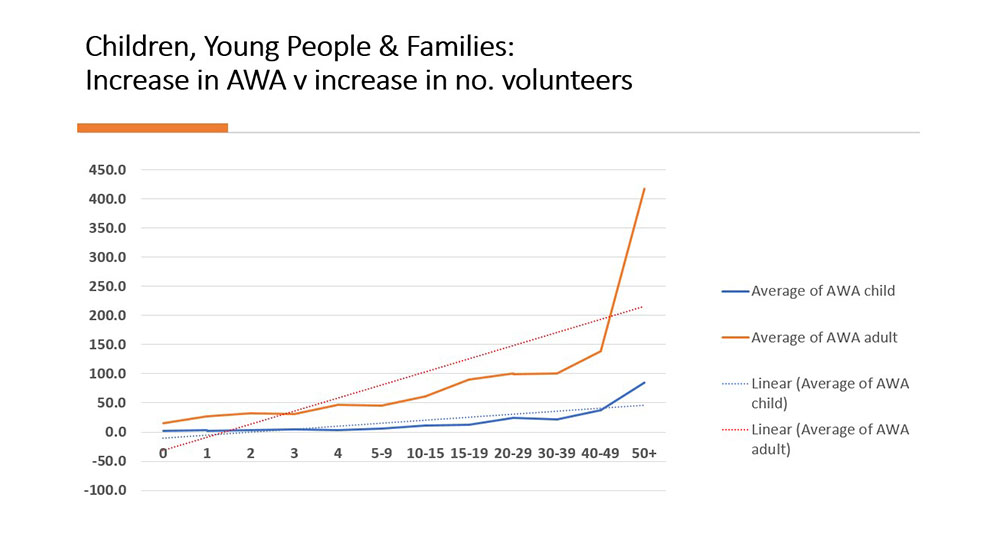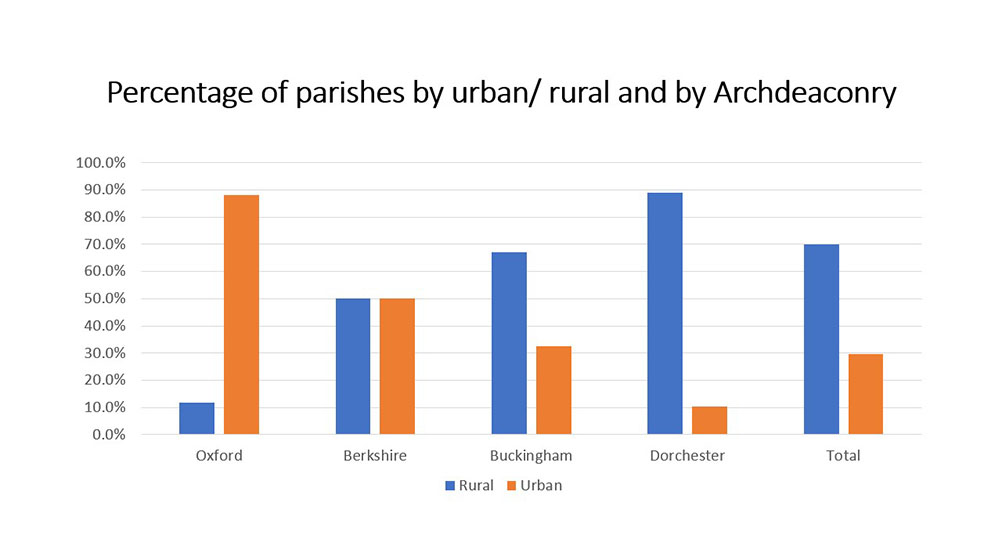The Archdeacons write to Church Wardens each year with a request for information from each parish in the diocese. Data collection for 2023 began at the start of January and closed on 10 April 2023. This year 81% of parishes submitted their return, the highest return rate since Articles of Enquiry collection began. Given the high number of responses, the findings on this page can be used with confidence as they are representative of parishes across the diocese.
The themes for the 2023 articles were the five focus areas from our common vision to become a more Christ-like Church: environmental action; christian formation and discipleship; growing new congregations; schools, children, and young people; addressing poverty and inequality.
Key findings: environmental action
Our environmental action work supports churches with a range of initiatives including energy audits and the Eco Church awards programme.
- Many churches only have one building, some have a second being a church hall usually, and only a few have more than two buildings. Looking at the first building reported by each parish shows that churches open for longer are associated with higher attendance.
- A parish’s main building (usually a church) is open for an average of 11 hours per week. This varies by whether a parish is defined as urban or rural (see below), from being open for 22 hours a week in an urban parish, and 6 hours a week in a rural parish. There is variation in the average hours the building is open by archdeaconry, from 21 hours in Oxford archdeaconry to 6 hours in Dorchester archdeaconry. This is not totally explained by there being far fewer urban churches in Dorchester than in Oxford archdeaconry, since the Dorchester urban parish main buildings are only open for 14 hours per week compared with 23 to 25 hours per week for urban parishes in the other archdeaconries.
- Key energy saving measures taken by over half of all parishes in the past twelve months, was to reduce the number of hours they heat their churches and changes to energy efficient LED light bulbs.
- A key measure is Kwh /m2 /hours of use (services, church activity and community use), which for 2021 was 352.9, an average of 2.8 per reporting parish.
Key findings: christian formation and discipleship
Our christian formation and discipleship work supports the churches and individuals to grow and nurture their everyday faith.
- One third of parishes had run one or more nurture courses in the past 12 months. This varied by Archdeaconry from over half of all parishes in Oxford, to one quarter of all parishes in Dorchester.
- Having a higher proportion of rural parishes (see below) only partly explains the difference between Dorchester and the other archdeaconries; 41% of Dorchester’s urban parishes ran a nurture course in 2022 compared to the diocesan average of 47%, and 18% of Dorchester’s rural parishes ran a nurture course in 2022, compared to the diocesan average of 24%.
- One third of parishes had run one or more nurture courses, and this varied by Archdeaconry from over half of all parishes in Oxford, to one quarter of all parishes in Dorchester. Several different nurture courses were named by respondents, and some parishes had run more than one type of course. The most frequently named were the diocesan Come and See Lent course, Alpha, and Bible courses not specifically named. Across the diocese almost 1,200 people had attended a nurture course offered by their church who had previously not attended worship at least once a month.
- Across the diocese 329 people were reported to have some form of Personal Discipleship Plan (PDP) by wardens. These people came from 41 parishes. However, a further 423 parishes reported that nobody in their parish had a PDP. [Note that the nature of the process is that wardens may not be aware of all those who have worked through a PDP.]
Key findings: growing new congregations
Our new congregations work aims to help churches to nurture and grow new worshipping congregations of every type, tradition, shape, and size. This work is part-funded by a Strategic Development Fund (SDF) grant from the national church.
Note that a new congregation is defined as separate from a usual Sunday congregation and might meet on any day of the week, in a church building or elsewhere (such as a café or school). A new congregation's primary focus is worship, it meets at least once per month, and is mainly made up of people who were not previously attending church regularly.
- 89 parishes told us that they had new congregations, started since May 2020, that meet the definition above.
- 39 parishes said they had potential new congregations started since May 2020, whose leaders aspire to start a new worshipping community, as defined above, but which has not yet reached that stage.
- A further 100 parishes said that they had an outreach activity that could potentially become a new worshipping community in the future.
- Parishes with new or potential new congregations tend to be those with a larger average average weekly attendance (AWA). For those that already have a new congregation the additional AWA could be explained by the size of that congregation, but this is not the case for those with a potential new congregation. This association might be a result of a parish with a larger AWA being one with more resources available to grow a new congregation, but we cannot show this from the data.
- Overall, 14% of parishes said they had one or more new congregations, but this varied between 20% of urban parishes and 11% of rural parishes. Over one quarter of parishes in Oxford archdeaconry had one or more new congregations compared with 10% of parishes in Dorchester archdeaconry. A much smaller proportion of Dorchester’s urban parishes had one or more new congregations, compared with the whole diocese, although a similar proportion of the rural parishes had a new congregation as in the whole diocese.
Key findings: schools, children, and young people
Our team of Discipleship Enablers works to support engagement between children, young people and families within the church, community and local schools.
- Where parishes engage with their local schools their child AWA- was almost nine times higher than where they have no engagement.
- One quarter of parishes offered Sunday provision for children and young people, and one quarter (not necessarily the same parishes) ran a toddler group. The more regularly each activity was provided for children and young people is associated with a higher child AWA.
- Overall, 10 per cent of parishes had engaged with Disciples Together, with a higher proportion in Oxford and Berkshire archdeaconries.
- Most parishes do not employ a full time CYF worker, 53 parishes employ one, a further 21 parishes employ 2, and 5 parishes mentioned employing 3 or more. There is an association between an increase in the number of full paid CYF workers and an increase in the child AWA. A similar pattern with child AWA was seen when considering volunteers working with children and young people.

Key findings: addressing poverty and inequality
Introduced during the pandemic, in response to the very visible need, this focus area seeks to raise awareness and amplify our response in responding to poverty and inequality.
- One key set of impact measures relate to parish involvement with social action. Overall, 55% of parishes said they had offered one or more of the social actions, but this varied between 48% of rural parishes and 72% of urban parishes.
- Churches contributed to different numbers of social action initiatives. Eleven per cent of churches contributed to three or more of the given initiatives, whereas 45% did not contribute to any of these.
- We have produced a social action data dashboard, which draws additional data from Statistics for Mission
Other findings: difference between urban and rural
Of interest is the difference between parishes defined as rural and those defined as urban. In our diocese 70% of parishes are defined as rural and 30% are urban. However, this varies considerably by archdeaconry, with Oxford archdeaconry having 88% of their parishes being defined as urban compared with only 10% of Dorchester archdeaconry’s parishes.

Other findings: parish website provision
One quarter of parishes currently do not have a parish website, and three quarters of these were interested or possibly interested in having a new parish website with support from the diocese using a common platform. Of the 411 parishes that said they currently had a website, 182 (44%) were interested or possibly interested in having a new parish website. We are currently looking into a potential solution for these parishes.